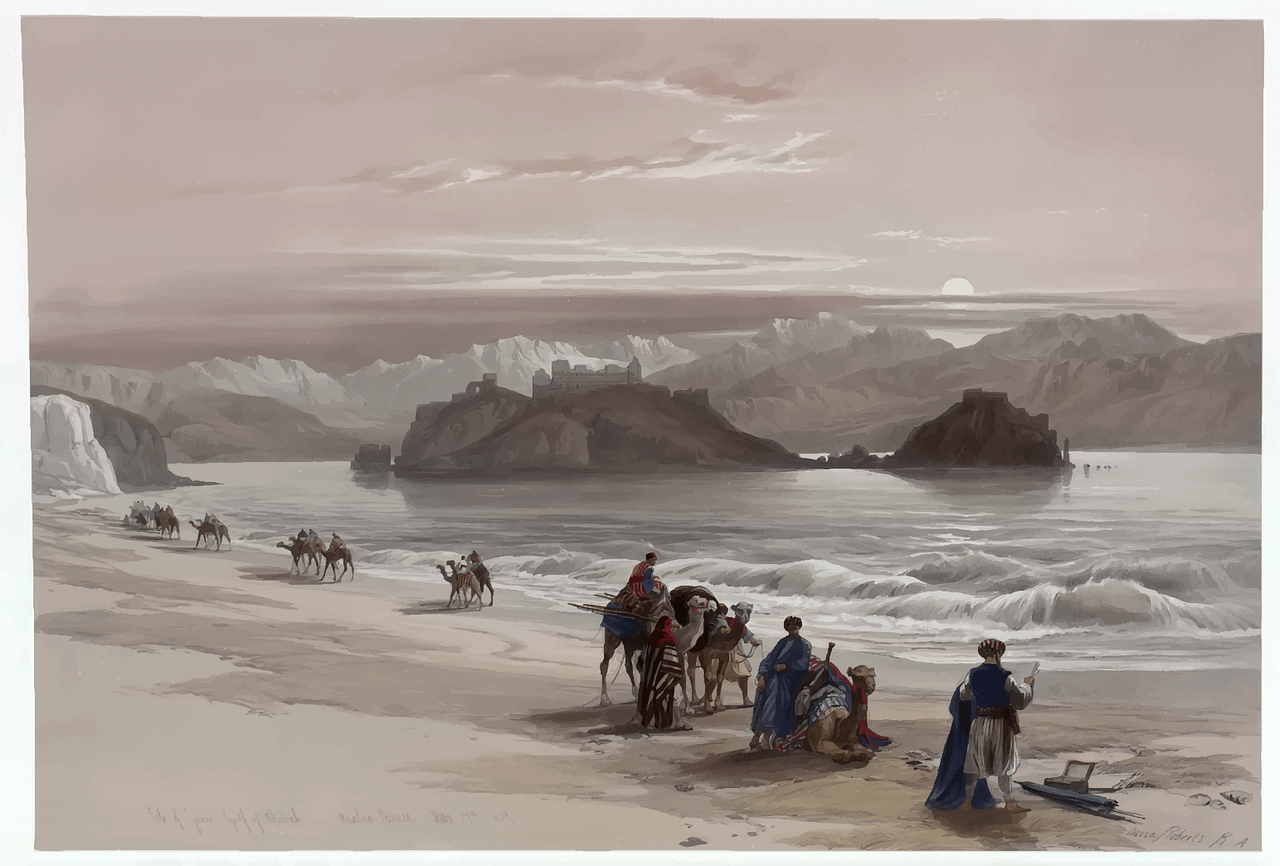The Caspian Sea seems like the least talked about body of water, for it has kept many of its mysteries still hidden.
Even today, oceans fascinate us with their hidden dark depths and inaccessible trenches that still hold many secrets. For all their mysteries, oceans often overshadow smaller bodies of water, like their cousins, the seas.
A border between Asia and Europe
The Caspian Sea is considered the largest landlocked sea. It lies at the crossroads between Europe and Asia. One side facing the Caucasus mountains and the other to the steppe.
Peering at it from above we might consider it a lake. A very large lake at 371 00 square kilometers, and yet we call it a sea. It has been considered a Sea ever since ancient times. Possibly due to its size and the salinity of its waters. The salt content is only a third compared to Oceans, so the Caspian has far less salt concentration.
For a long time oceans have been an obstacle to many civilizations. For many others, oceans have been a gateway. Many people were scared to venture out onto these unpredictable new environments. Others saw it as a challenge, something to be conquered.
As small as the Caspian Sea looks from a satellite image today, it didn’t seem small on paper maps. Standing on the shore no one would consider the Caspian a lak. It goes as far as the eye can see.
Rich biological environment
Sailing North to South, the Caspian Sea stretches 1200 km, while east to west a mere 320 km. Narrow and long would be a short description of the Sea at a first glance from a bird’s eye view.
Beneath the surface lies another intriguing feature. The Northern part has shallower waters averaging between 5 and 6 metres. To the south, depths reach well over 1200 metres.
This variation in depth is a breeding ground for biodiversity and ecosystems. This provides rich biological resources that attracted people for centuries to populate its shores.
A fragment of an ancient sea
The Caspian Sea used to be a part of a bigger older sea, the Paratethys Sea, which covered most of south-western Europe. Tectonic shifts 5.5 million years ago lifted the earth’s crust and lowered water levels. This meant it land locked the Caspian Sea, separating it from the Black Sea, the Mediterranean, and the ocean.
People have often made their homes in settlements near water, be it on seashores, or rivers and lake banks. The Caspian Sea gets its name from an ancient group of people who lived close to the seashore. The Caspi, or the Caspiane tribe disappeared long ago. Ancient geographer, Strabo mentions them in his writings.
A sea cloaked in mystery and legends
The size of the Caspian Sea stunned many ancient explorers. They believed it had to be linked to the Northern Ocean. People having contact with any place will imminently create stories. The Caspian Sea is no exception. It has captured many imaginations and has a very thick cloak of mystery around it.
The gates of Alexander
Assyrians regarded this expanse of water as the sun’s home. It’s said Alexander the Great, in his conquest of Asia, deemed it useful to build a barrier in the Caucasus. He wanted to keep invaders away, ironic since he invaded first.
That barrier was named the Caspian Gates or Gates of Alexander. The invaders in question have a legend surrounding them as well. The defensive gates built by Alexander are there to serve a greater good, as medieval ages writers have reported.
The gates were built to keep the tribes of Gog and Magog at bay until they return to destroy the world.
Dangerous waters
The Caspian Sea has known multiple periods of water level fluctuations, that have repeatedly changed and influenced the neighbouring countries. The invading waters were not of ample dramatic proportions that instantly destroyed coastlines, but many cities and fortifications along the coast have suffered due to the waves.
The ever-changing patterns of settlement along the Caspian Sea have shrouded it in mystery. Many legends came to be born as a way to explain the enigmas tied to it.
City lost under the waters
A most fascinating fabled city, called Atil or Itihl, is presumed to have been taken under the waters of the Caspian Sea, on one of the many occasions when it overflowed. The city used to be the capital of a very powerful polity called Khazaria, a Khaganate located in the southeastern part of modern-day Russia.
The city was described by many Arab sources, as a major trading city with a multi-ethnic and religiously varied population of Christians, Muslims, Pagans, Shamanists and Jews. This mosaic of the ethnic people had two judges from each respective group as representatives to settle any quarrels that might have arisen in the city. No definitive proof of this city has been found, but the legends of its existence attract attention.
Atlantis of the Caspian Sea – Sabayil Castle
In Azerbaijan on the coast of the capital Baku, Sabayil Castle, a 14-century structure, lies submerged in the Caspian Sea. It is unclear whether Sbayil was a castle or simply a caravanserai. A caravanserai was an inn on the roadside that accommodates travellers with caravans.
The structure at the bottom of the water has intrigued many curious minds and has been dubbed the Atlantis of the Caspian Sea.
For such a vast body of water, The Caspian Sea has not had many studies conducted around its historic importance to the people that settled on its shore. No one knows for sure how many sunken ships there may be on the bottom of the Caspian Sea, as it still holds on to many of its historic secrets.
Most interest around it is focused on its oil and industrial potential rather than historic intrigue.



Leave a Comment